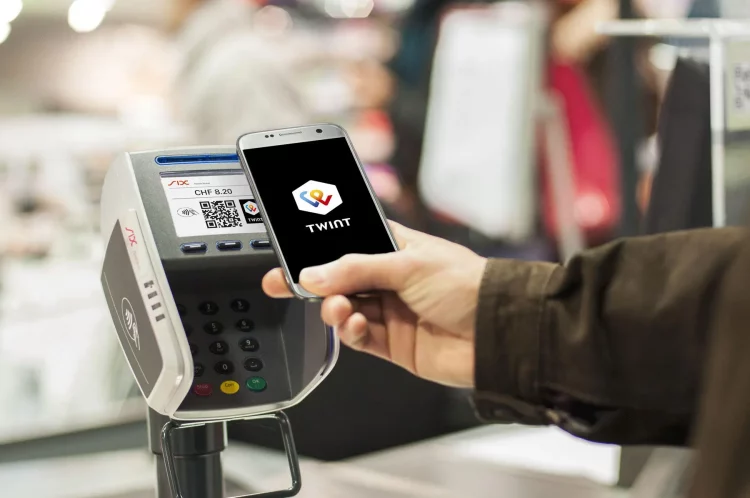Introduction
In recent years, mobile payment solutions have become a significant part of the global financial landscape. Technologies like Apple Pay, Google Pay, WeChat Pay, and Alipay have revolutionized how we make purchases, offering convenience, speed, and security that traditional cash transactions simply can’t match. Whether paying for coffee at a local café, purchasing groceries, or even paying for large-ticket items, mobile payments have swiftly gained popularity.
However, despite the widespread adoption of mobile payments, the question arises: Will mobile payments completely replace traditional cash transactions? While mobile payments have certainly grown, cash remains a preferred method of transaction for many, especially in regions where digital infrastructure is lacking, and for those who are more comfortable with physical money.
This article will explore the rise of mobile payments, the factors driving their growth, the challenges in completely replacing cash, and whether traditional cash transactions can or should be fully replaced in the future.
1. The Rise of Mobile Payments
A. Evolution of Payment Methods
To understand how mobile payments have gained traction, it’s important to first look at the evolution of payment methods:
- Cash: The most traditional form of transaction, cash has been used for centuries. It provides anonymity and is widely accepted in most places.
- Credit and Debit Cards: The introduction of credit and debit cards brought convenience by eliminating the need for physical cash. These cards enabled electronic transactions through magnetic stripes and later, chip technology.
- Mobile Payments: In the last decade, smartphones equipped with NFC (Near Field Communication) and mobile apps have enabled consumers to pay via their phones. With a simple tap or a scan of a QR code, mobile payments have made transactions faster and more convenient.
B. Key Mobile Payment Systems
Several mobile payment systems have become prominent globally:
- Apple Pay: A mobile wallet available on Apple devices, it allows users to make secure payments using their iPhone or Apple Watch.
- Google Pay: Google’s digital wallet platform works across Android devices, allowing users to pay via NFC or make online purchases.
- WeChat Pay and Alipay: These are the leading mobile payment systems in China, integrated into social media and e-commerce platforms, making payments seamless within various aspects of daily life.
- Samsung Pay: Samsung’s solution, which supports both NFC and MST (Magnetic Secure Transmission), is widely used in many countries.
These systems make payments easier, faster, and, in some cases, even more secure compared to traditional payment methods.
2. Benefits of Mobile Payments
A. Convenience
One of the primary reasons mobile payments are becoming increasingly popular is the convenience they offer. With mobile payments, consumers no longer need to carry cash or even their physical cards. Everything is integrated into their smartphone, which can be used to complete purchases in seconds.
- Speed: Mobile payments are faster than traditional cash or card transactions, making the checkout process more efficient.
- No Need for Cash: Forgetting cash or cards is no longer an issue; everything is stored on your phone.
- Seamless Integration: Mobile payments can be integrated into various platforms (shopping apps, ride-sharing apps, food delivery services), offering a seamless consumer experience.
B. Security
Mobile payments often incorporate sophisticated security features, which can make them safer than carrying cash or physical cards:
- Encryption and Tokenization: Payments made through mobile wallets like Apple Pay and Google Pay use encryption and tokenization, making the transaction details unreadable to hackers.
- Biometric Authentication: Many mobile payment apps use biometrics (face recognition, fingerprint scanners) to authenticate payments, making it difficult for unauthorized users to complete a transaction.
- Two-Factor Authentication: In many cases, mobile payment apps require a two-step authentication process, adding an extra layer of security.
C. Accessibility and Global Reach
Mobile payments are not limited by geographic boundaries. Services like PayPal, Google Pay, and Apple Pay can be used across borders, making them ideal for international transactions. Mobile payments also provide access to financial services for individuals in regions where traditional banking infrastructure is limited or underdeveloped.

3. The Challenges of Replacing Cash
Despite the obvious advantages of mobile payments, replacing cash entirely faces significant challenges.
A. Digital Divide and Access to Technology
While mobile payments are gaining traction in developed countries, the digital divide remains a substantial barrier in many parts of the world:
- Lack of Access to Smartphones: Not everyone has access to smartphones, especially in developing countries where mobile phone penetration is still growing.
- Internet Connectivity: Mobile payments often require internet connectivity. In rural or underdeveloped areas where internet infrastructure is lacking, mobile payments may not be a viable solution.
- Financial Inclusion: Many people remain unbanked or underbanked, particularly in lower-income countries. These individuals are less likely to have access to mobile payment platforms, limiting the scope for a full transition to mobile-based transactions.
B. Security Concerns and Privacy Issues
While mobile payments are generally considered secure, there are ongoing concerns about privacy and potential cybersecurity risks:
- Data Privacy: Mobile payments often require sharing personal information, which raises concerns about how this data is stored and used by tech companies and third parties.
- Hacking and Fraud: Cybersecurity risks remain a concern, as mobile payment platforms could become targets for hackers. There have been instances where attackers have compromised user accounts, leading to unauthorized transactions.
- Tracking and Surveillance: The use of mobile payments can create detailed records of a person’s spending habits, raising concerns about surveillance and the misuse of personal data.
C. Resistance to Change and Habitual Behavior
For many individuals, cash is still a preferred method of payment, especially in certain situations:
- Anonymity: Cash offers privacy, as transactions are not linked to any digital profile. Many people still prefer the anonymity that cash provides.
- Familiarity: People have been using cash for decades and are often resistant to adopting new technologies. The adoption of mobile payments may take longer for those who are comfortable with the traditional way of doing things.
- Cultural Preferences: In certain cultures, cash remains deeply ingrained as a method of payment. Even in technologically advanced countries, there are communities that continue to rely on cash for everyday transactions.
D. Infrastructure and Merchant Readiness
To fully replace cash, mobile payment infrastructure must be widely adopted by merchants and service providers:
- Point-of-Sale Systems: While many retailers and businesses now accept mobile payments, not all have updated their point-of-sale systems to support mobile payment options, especially in smaller or local businesses.
- Cost of Implementation: For smaller businesses, the cost of adopting mobile payment systems can be prohibitive. This is particularly true in developing countries where the cost of technology and system updates is high.
4. The Future of Cash and Mobile Payments
A. Coexistence of Cash and Mobile Payments
While mobile payments are likely to continue growing, it’s unlikely that cash will be entirely phased out in the near future. Instead, a coexistence of mobile payments and cash transactions seems more plausible for the following reasons:
- Consumer Choice: Different consumers have different preferences. Some may continue to prefer cash due to privacy concerns, while others may embrace mobile payments for convenience.
- Cultural and Regional Differences: In certain regions, cash remains the preferred method of payment, especially in areas with limited access to smartphones or internet connectivity.
- Economic and Legal Considerations: Governments and financial institutions will need to consider the economic implications of eliminating cash, including the impact on people who are unbanked or underbanked.
B. Technological Advancements and Digital Currency
The future of payments may not just be about mobile phones. Emerging technologies like digital currencies (e.g., central bank digital currencies or CBDCs) and blockchain could change the way we make transactions. Digital currencies could provide a new level of security and efficiency, further pushing the adoption of digital payments.
- Central Bank Digital Currencies (CBDCs): Governments around the world are exploring the possibility of creating their own digital currencies. These currencies could offer an alternative to cash, making transactions more efficient, secure, and transparent.
- Blockchain Technology: Blockchain’s decentralized nature could enable peer-to-peer transactions without relying on traditional banking systems, further reducing the need for cash.
Conclusion
Mobile payments have undoubtedly revolutionized the way we transact, offering numerous benefits like convenience, speed, and security. However, while their rise is undeniable, it is unlikely that mobile payments will completely replace traditional cash transactions in the near future. Challenges such as the digital divide, security concerns, cultural resistance, and the need for infrastructure investment remain significant hurdles.
In the long term, mobile payments and cash will likely coexist, each serving different purposes in different contexts. Cash will continue to provide privacy and anonymity for those who prefer it, while mobile payments will cater to those seeking speed, convenience, and digital integration. The question isn’t whether cash will disappear entirely, but rather how we can create a balanced and inclusive payment ecosystem that accommodates the diverse needs of society.
















































Discussion about this post